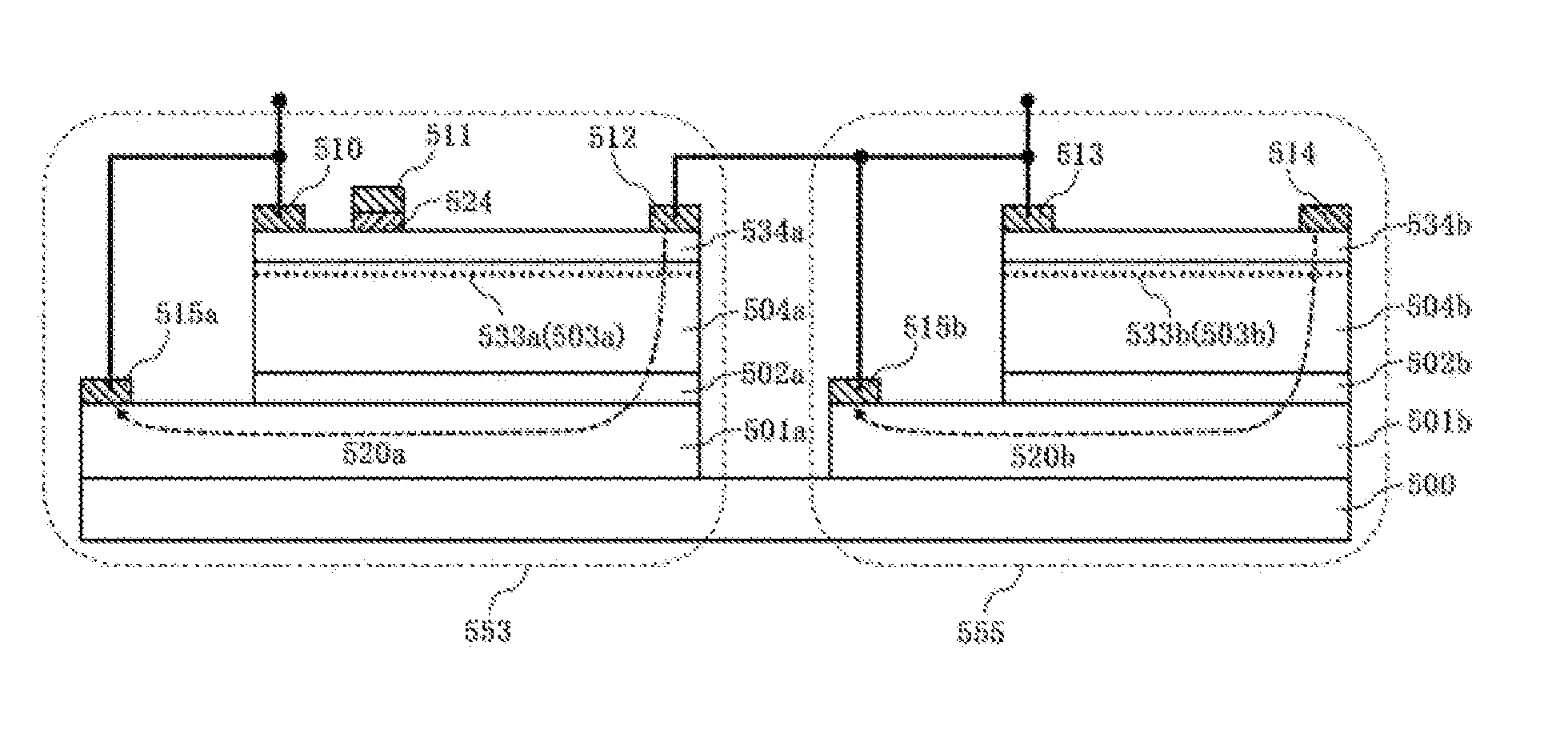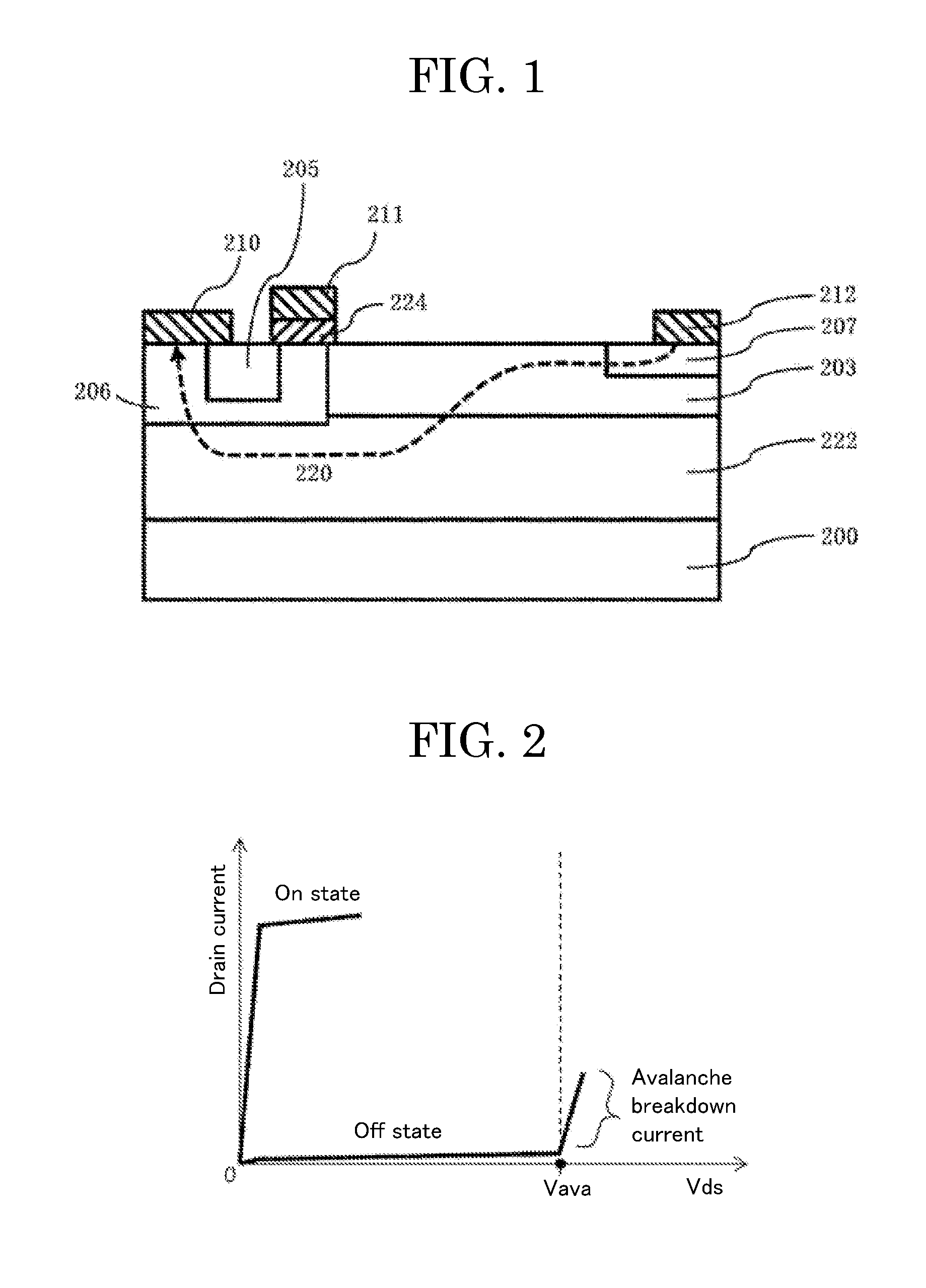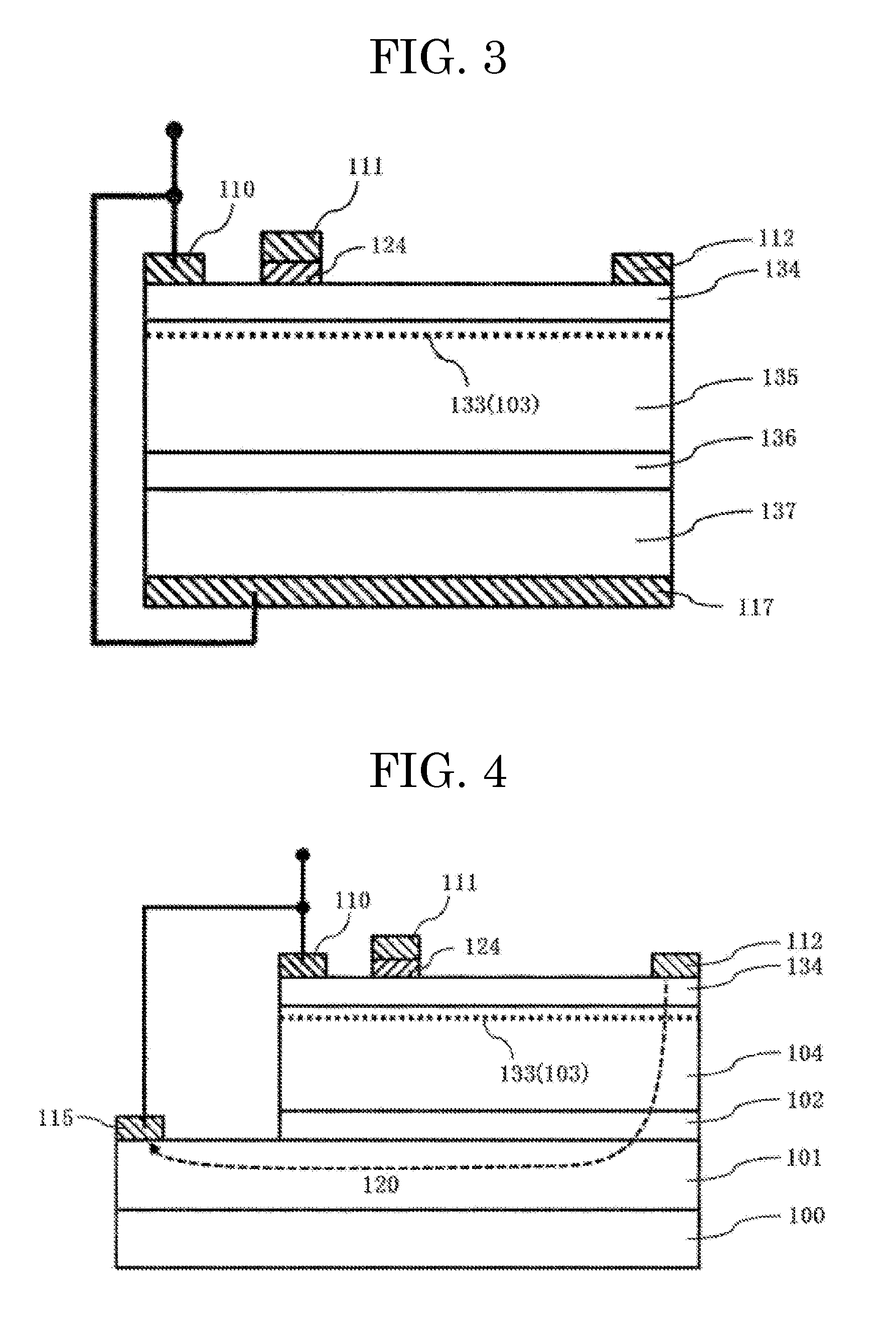Semiconductor device
a technology of semiconductor devices and semiconductors, applied in semiconductor devices, diodes, electrical apparatus, etc., can solve the problems of limiting the improvement of deterioration of other two, and inability to improve the performance of power semiconductor devices, so as to improve the tolerance against breakdown, prevent the destruction of semiconductor devices, and high response speed
- Summary
- Abstract
- Description
- Claims
- Application Information
AI Technical Summary
Benefits of technology
Problems solved by technology
Method used
Image
Examples
example 1
First Embodiment
[0141]A HFET made of a nitride semiconductor, which is the first embodiment, will be explained. FIG. 4 shows a configuration diagram of a nitride semiconductor HFET according to the present invention. The semiconductor material of the HFET except for a substrate 100 is a nitride semiconductor having a chemical formula represented by the following formula (3).
BxAlyInzGa1-x-y-zN (3)
[0142]In the formula, x, y, and z have values that satisfy 0≦x≦1, 0≦y≦1, 0≦z≦1, and x+y≦z≦1. The material of the substrate 100 needs not be a nitride semiconductor.
[0143]It is preferable that the layer structure of the present invention be formed in a c-axis direction of a hexagonal crystal structure. The c-axis direction is a [0001] or [000-1] direction.
[0144]It is preferable that the material of the substrate 100 be a material over which a high-quality crystal growth of a nitride semiconductor can be realized. Examples of the material include a Si substrate, a SOI (Silicon-on-Insulator) s...
example 2
Second Embodiment
[0220]A MISFET made of SiC, which is the second embodiment, will be explained. FIG. 37 shows a structure diagram of a MISFET made of SiC according to the present invention. The semiconductor material forming the MISFET is SiC, except for a substrate 200. It is preferable that the polytype of SiC be 3C, 6H, and 4H. The substrate 200 may be made of a material other than SiC.
[0221]Further, a polytype is particularly preferably 6H and 4H of a hexagonal crystal system, and it is preferable that the layer structure be formed in a c-axis direction of a hexagonal crystal structure. The c-axis direction is a [0001] or [000-1] direction. A dielectric constant in the c-axis direction is higher than the dielectric constant in the a-axis direction. Therefore, the trade-off among a punch-through breakdown voltage, an avalanche breakdown voltage, and a characteristic On resistance can be resolved, and a high device withstand voltage and an On resistance can be achieved simultaneou...
example 3
Third Embodiment
[0247]A JFET made of SiC, which is the third embodiment, will be explained. FIG. 40 shows a configuration diagram of a MISFET made of SiC according to the present invention. The semiconductor material forming the MISFET is SiC, except for a substrate 300. It is preferable that the polytype of SiC be 3C, 6H, and 4H. The substrate 300 may be made of a material other than SiC.
[0248]Further, a polytype is particularly preferably 6H and 4H of a hexagonal crystal system, and it is preferable that the layer structure be formed in a c-axis direction of a hexagonal crystal structure. The c-axis direction is a [0001] or [000-1] direction. A dielectric constant in the c-axis direction is higher than the dielectric constant in the a-axis direction. Therefore, the trade-off among a punch-through breakdown voltage, an avalanche breakdown voltage, and a characteristic On resistance can be resolved, and a high device withstand voltage and an On resistance can be achieved simultaneou...
PUM
 Login to view more
Login to view more Abstract
Description
Claims
Application Information
 Login to view more
Login to view more - R&D Engineer
- R&D Manager
- IP Professional
- Industry Leading Data Capabilities
- Powerful AI technology
- Patent DNA Extraction
Browse by: Latest US Patents, China's latest patents, Technical Efficacy Thesaurus, Application Domain, Technology Topic.
© 2024 PatSnap. All rights reserved.Legal|Privacy policy|Modern Slavery Act Transparency Statement|Sitemap



